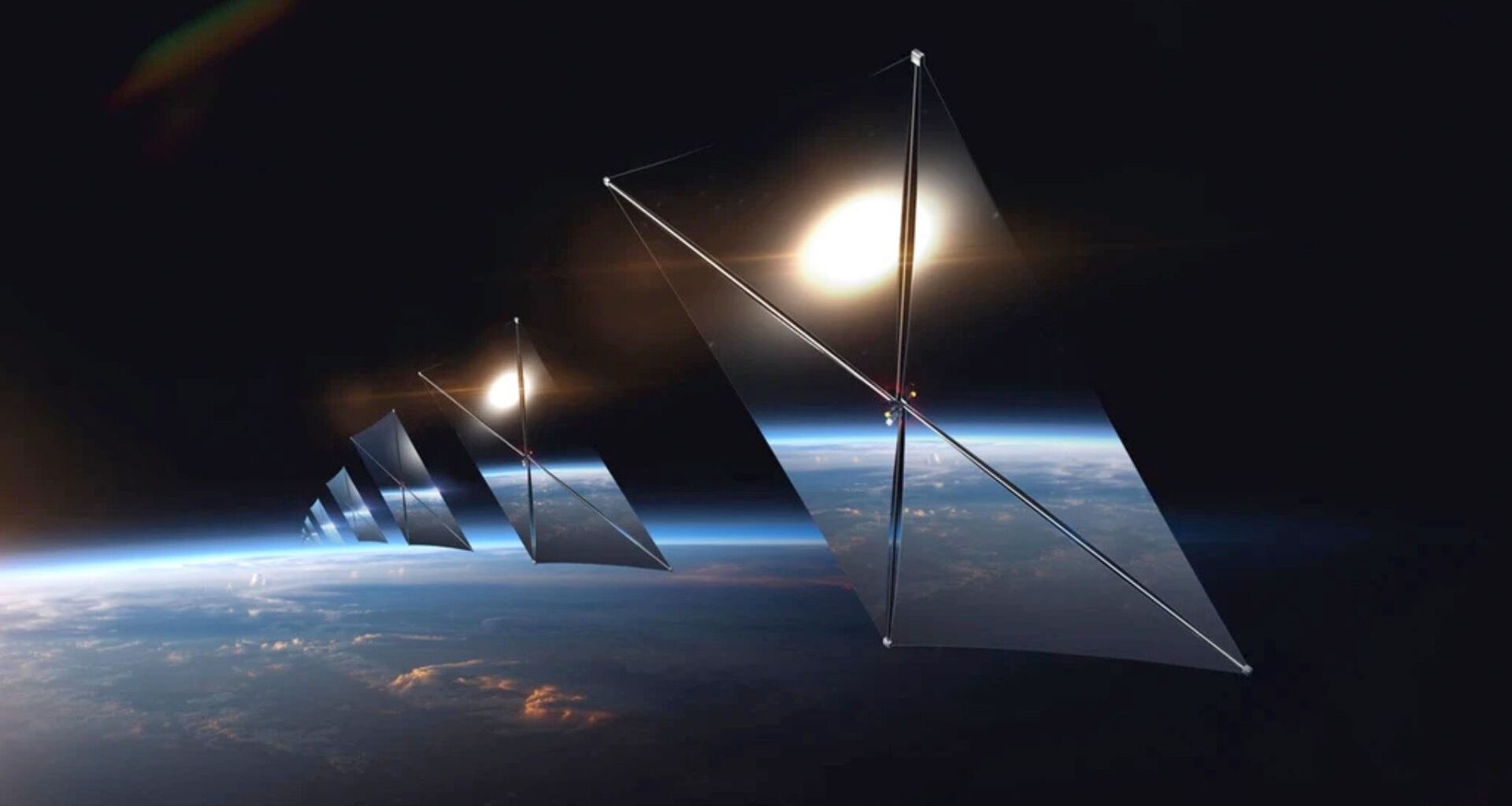An ambitious proposal by US startup Reflect Orbital has astronomers and environmentalists deeply concerned.
The California-based company plans to deploy a massive constellation of satellites designed to beam “sunlight on demand” to Earth. It could extend the operating hours of solar farms even into the dark.
Although the project offers novel renewable energy solutions, critics caution that it could alter the night sky by creating light pollution.
Bloomberg reported that the constellation’s light could be “blindingly bright” for sensitive astronomy cameras and potentially “ruinous” to optical astronomy conducted from the ground.
Test satellite launch in 2026
Reflect Orbital’s vision involves orbiting mirrors reflecting sunlight down to specific locations on Earth.
The satellites will use mirrors made from Mylar, a durable, ultra-thin material, to capture sunlight and direct it to targeted spots on the ground.
If successful, this technique could enable solar farms to generate power even after the sun has set.
The company has already applied to launch its first 18-meter test satellite, named Earendil-1, in 2026. The launch license has been requested from the Federal Communications Commission.
Current reports indicate that the test satellite would be followed by a constellation of roughly 4,000 orbiting satellites by 2030.
The satellites are expected to orbit about 625km (388 miles) above the ground.
As per the Conversation piece, it’s possible that the constellation could eventually swell to include 250,000 satellites, all potentially fitted with 54-meter mirrors.
These satellites will reflect light roughly 15,000 times dimmer than the midday sun but remain brighter than a full moon.
A looming threat to dark skies
Astronomers are particularly alarmed by the project’s implications.
The existing satellites cause light pollution as an unintended byproduct of reflecting sunlight, but Reflect Orbital’s satellites are designed for precisely that purpose.
“Even if just the test satellite works as planned, it will sometimes appear far brighter than the full moon,” warned one expert. “A constellation of such mirrors would be devastating to astronomy and dangerous to astronomers.”
The concerns are multifaceted.
Looking through ground telescopes like Rubin, the brightness of these mirrors could nearly match the sun’s surface, posing a risk of “permanent eye damage.”
Furthermore, the constellation brightness would drown out faint celestial objects and limit astronomical observations.
Beyond astronomy, the continuous illumination could disrupt the delicate daily rhythms of nocturnal animals, impacting ecosystems worldwide.
Critics also point out that even though Reflect Orbital intends to illuminate targeted areas, the satellites’ movement will cause the light beams to sweep over large regions of Earth, inevitably. It could produce flashes in the night sky that are brighter than the moon.
Feasibility under scrutiny
Apart from the light pollution concerns, the physics of reflecting sunlight from orbit reveals major challenges to Reflect Orbital’s plan.
Since low-Earth orbit satellites pass over a location in only about 3.5 minutes, maintaining continuous illumination for even one hour demands thousands of satellites.
Reflect Orbital’s own staggering projection of 250,000 satellites still calculates to only delivering the target 20% of midday sun to a very limited number of regions simultaneously.
The company asserts that it will redirect sunlight in a manner that is “brief, predictable, and targeted,” and promises to share satellite location data to help observatories avoid disruption.
The American Astronomical Society’s August survey revealed that the majority of astronomers believe the proposed satellite constellation would negatively impact their work.
The number of satellites cluttering Earth’s orbit is rapidly increasing, primarily due to large constellations launched by private companies like SpaceX (Starlink), Amazon (Project Kuiper), and Eutelsat OneWeb.
This rapid proliferation is highlighted by the fact that nearly 2,700 satellites were launched in 2024 alone.

